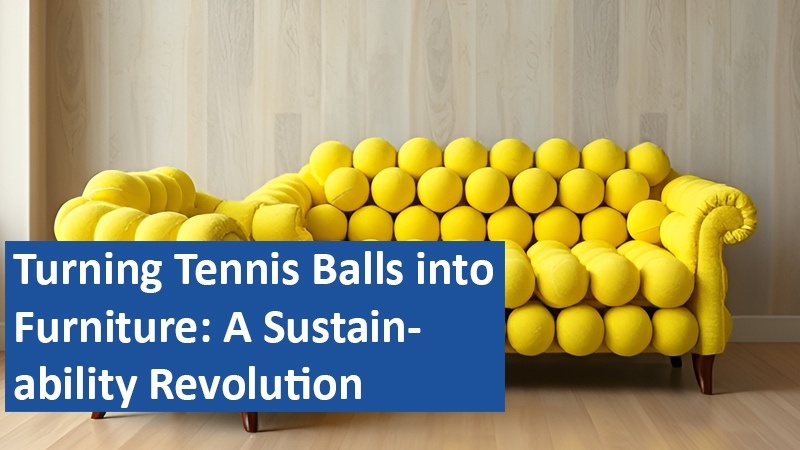A Belgian designer has found an innovative way to combat waste by turning old tennis balls into stylish furniture. With 300 million tennis balls produced annually, most of them end up in landfills. This eco-friendly initiative repurposes these balls into unique pieces of furniture, helping to reduce environmental waste.
By John Adams
From Court to Cushion: Sustainable Furniture Design

Mathilde Wittock, an eco-conscious designer from Belgium, has created a remarkable solution to the waste problem caused by used tennis balls. Her design process transforms these discarded balls into cushioning elements for furniture, such as chaise lounges and benches. Working with her team, Wittock can process up to 1,800 tennis balls per day, giving them a second life instead of letting them decompose in landfills for over 400 years. This project showcases creativity and emphasizes the importance of sustainable design.
A Detailed Process with Big Results
The journey from tennis ball to finished furniture piece is a labor-intensive process, taking around two to three weeks. However, the end product is both functional and aesthetically pleasing. Wittock adds a unique touch by dyeing the felt of the tennis balls to match various interior designs, making her furniture a visually striking option for eco-conscious consumers. Her approach tackles a significant waste problem while offering an elegant solution that blends style with sustainability.
Sourcing Tennis Balls for a Circular Design
Wittock sources used tennis balls from various sports clubs, including a recent donation of 100,000 balls from the Federation of Wallonia in Belgium. This stock alone will support approximately nine months of production. True to the principles of eco-design, Wittock ensures that the entire lifecycle of the product is considered, from sourcing the materials to what happens at the end of the furniture’s useful life. Her dedication to circular design means that once the furniture has served its purpose, the rubber from the tennis balls can be shredded and repurposed into play mats for children.
Closing the Loop with Eco-Friendly Practices
Wittock’s commitment to sustainability doesn’t stop when her furniture leaves her workshop. Customers can return their furniture at the end of its life, where the felt is removed and the rubber is recycled into new products, continuing the cycle of reuse. This approach exemplifies the principles of the circular economy, where waste is minimized, and materials are continuously repurposed. Wittock’s furniture offers a glimpse into a future where sustainable design practices are not just an option but the standard.
Mathilde Wittock’s project demonstrates how creative thinking and eco-design can transform waste into something valuable and functional. Her dedication to the full lifecycle of products could redefine how designers approach sustainability in the furniture industry.
Based on content from www.goodnewsnetwork.org and additional research.